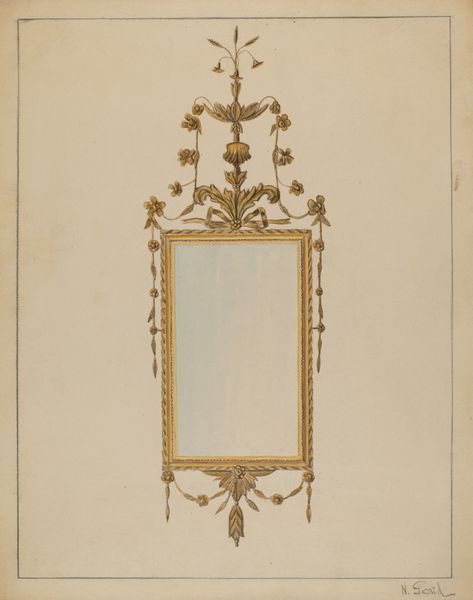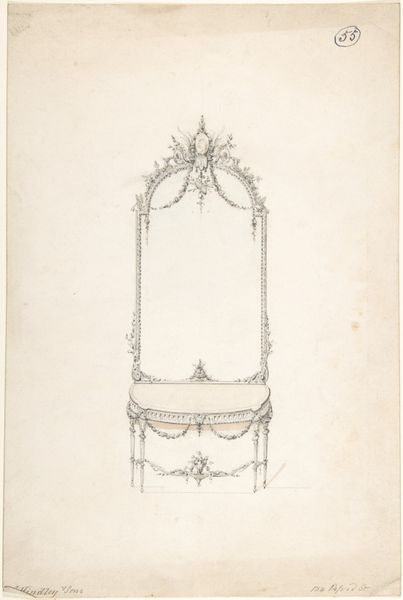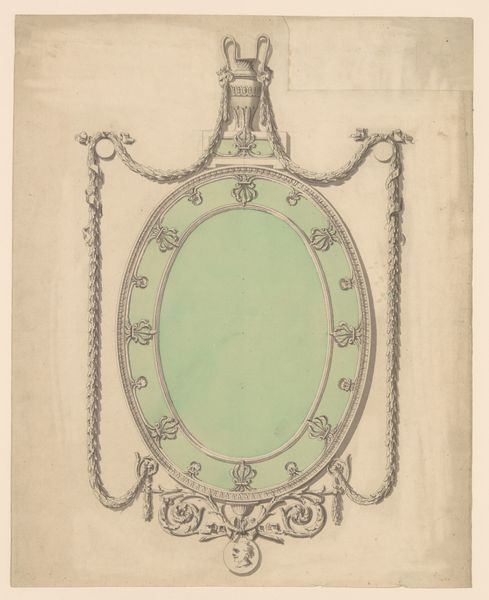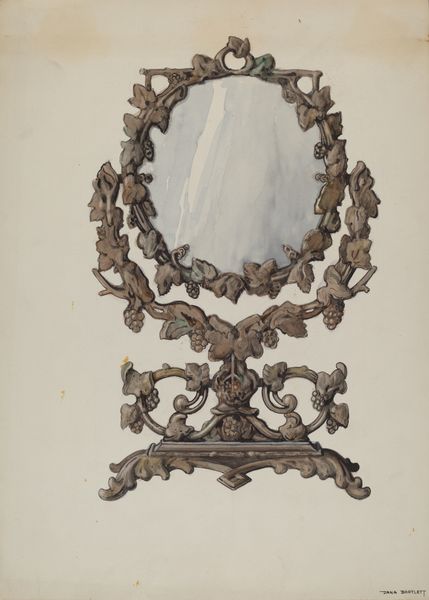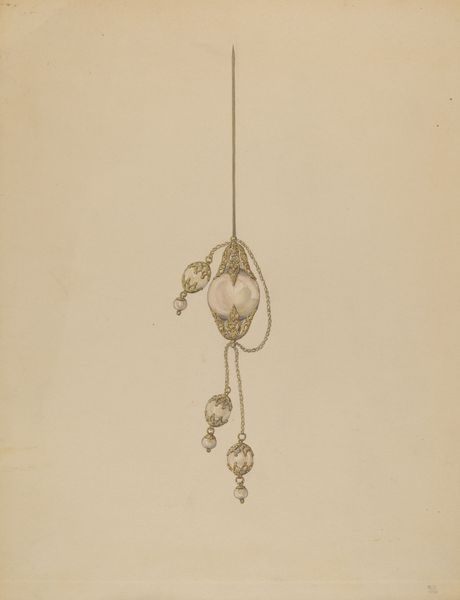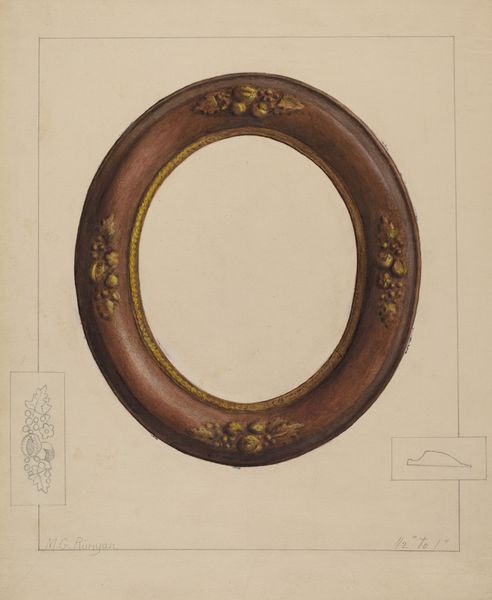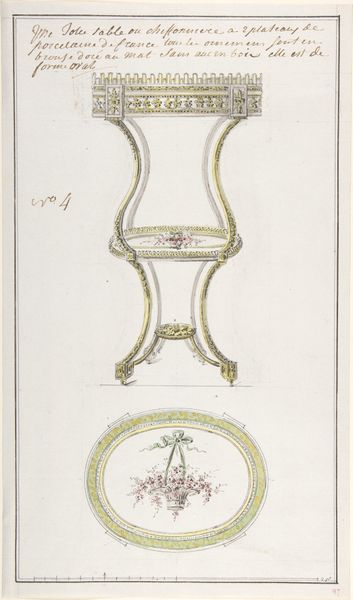
drawing, paper, watercolor
#
drawing
#
paper
#
watercolor
#
watercolour illustration
#
watercolor
Dimensions: overall: 29.9 x 22.8 cm (11 3/4 x 9 in.) Original IAD Object: 39 1/2"high; 42 1/2"wide
Copyright: National Gallery of Art: CC0 1.0
Curator: Nicholas Gorid created this lovely watercolor and drawing on paper around 1936, titled "Mirror". Its subtle washes and fine lines create an object of real grace. Editor: My first impression is one of nostalgia. The antique gold trim evokes a sense of past elegance and perhaps hints at the objectification of women throughout history, confined by these gilded frames and expectations. Curator: Intriguing! Let's explore that a bit. Technically, the work displays a remarkable control of line. Note the intricate detailing of the frame, achieved through delicate watercolor washes and pen work, particularly around the ribbon and ornamental flourishes. How would you interpret these features from a cultural studies standpoint? Editor: These visual elements—the bow, the ornate curves—symbolize the constructed idea of femininity in the 1930s. Mirrors reflect societal ideals back at individuals, particularly women, who are often scrutinized against narrow standards of beauty. Curator: It's a compelling reading. I see also a successful exploration of asymmetry in the composition. Although the mirror itself is formally balanced, the organic asymmetry in the painted strokes adds depth and dynamism, preventing it from being merely representational. The eye traces lines that guide it across the piece, creating balance but challenging norms. Editor: Absolutely, and I’d also suggest that mirrors themselves are hardly neutral objects; consider the gaze of the oppressor as it is reflected. For queer and trans people, the gaze can be painful because you see your body as it’s construed through other peoples’ narratives, expectations and misrepresentations. Curator: Food for thought. By carefully orchestrating elements, Gorid successfully leads our eye across the space, encouraging contemplation. Editor: True, it urges a reflection that considers those perspectives that are routinely excluded or disregarded when thinking about art of this period.
Comments
No comments
Be the first to comment and join the conversation on the ultimate creative platform.
